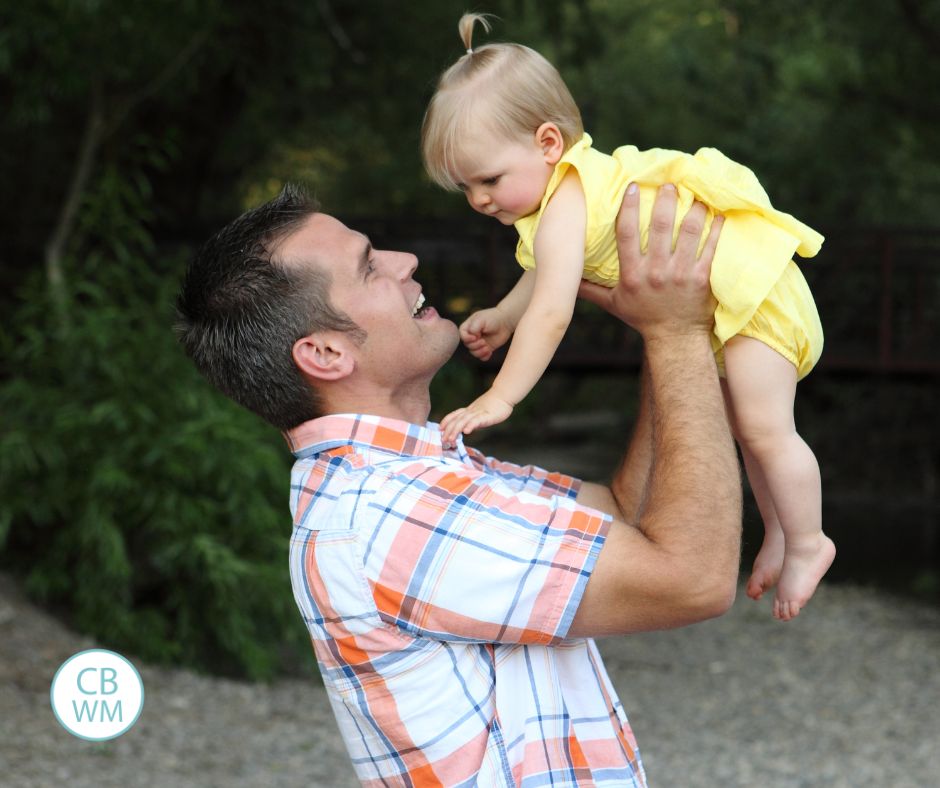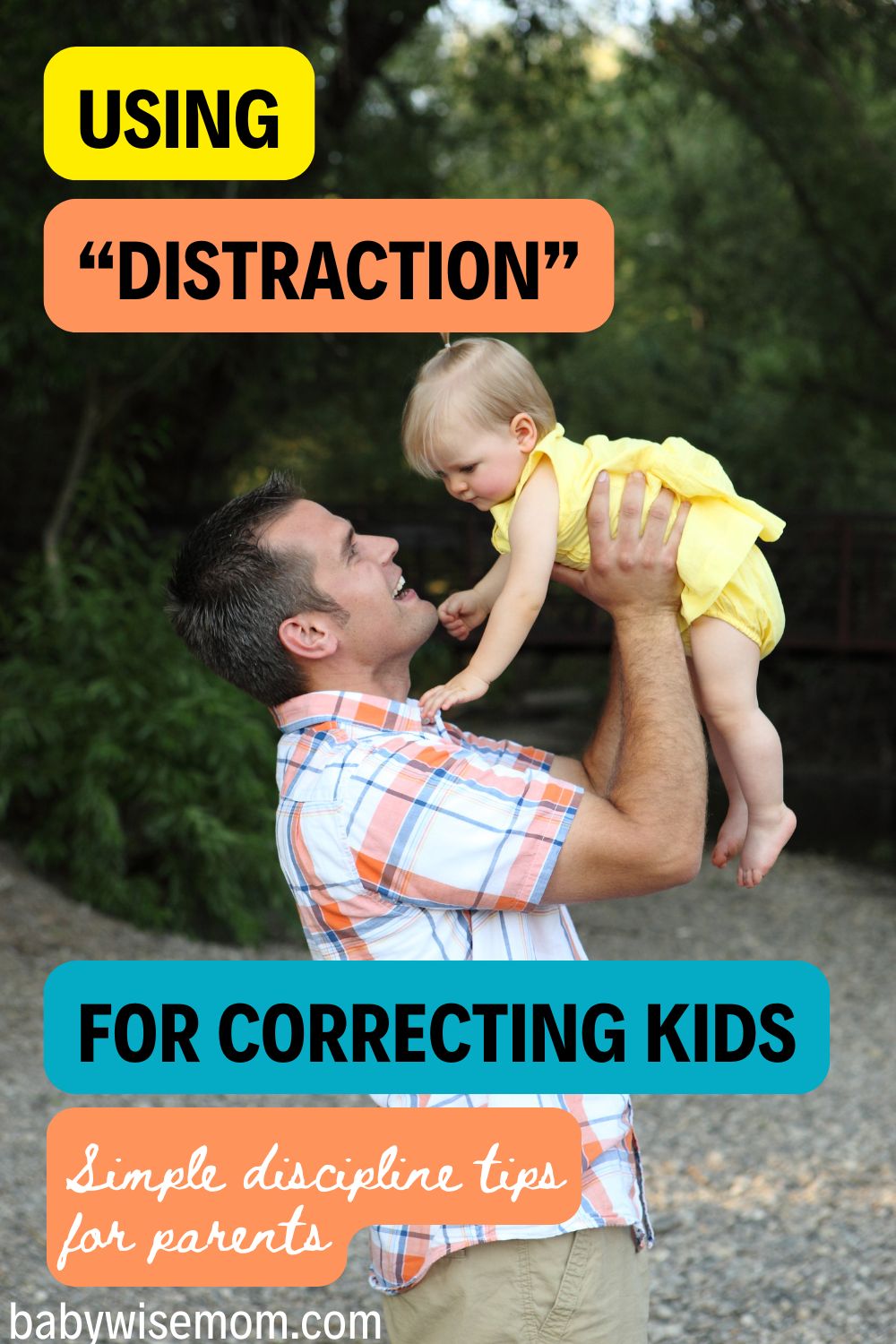Distraction is a great method to use to correct your child. This can be really helpful in public settings when you want to stop a behavior but do not want your child to have a complete meltdown.

Correcting children does not have to be something where you get firm or upset or something that leaves your child feeling upset. A very handy tool for discipline with older babies, toddlers, and even at times preschoolers is distraction. Distraction can correct and redirect your child without things being a big deal.
Post Contents
What is Distraction
Distraction is taking your child’s attention and placing it elsewhere. Let’s say your little pre-toddler is determined to pull the leaves off your plant. If you are going for distraction in this situation, you will find something else of interest for your pre-toddler to pay attention to instead.
This communicates to your child that the activity they are engaging in isn’t the best choice while giving them the ability to change from that activity with some grace. It is a good tool for you to use when you do not want to avoid a power struggle.
When and How Often To Use Distraction
You want to limit how often you use distraction in its raw form. The problem with distraction is that it can easily become you trying to find something exciting for your child anytime he is upset in an effort to prevent the little tantrum. You don’t want to try to prevent your child from ever being upset–those feelings will come and unfortunately life is full of disappointments.
>>>Read: Toddler Tantrums are Very Normal
There are circumstances where distraction is absolutely okay to use. I would say any time you are in public and see a melt-down coming on, you can go to distraction if needed. An example might be at church your 11 month old is trying to grab the scriptures off your neighbor’s lap. You pull out a toy you have brought with you that day to distract your child from grabbing the scriptures. Also if your child is hungry, tired, or sick, distraction can be a great tool. I often use distraction with a tired child when out and about–I try to do things to distract her from being tired. So I might lift her in the air, get out a book, get out a toy, get out a snack, tickle her, etc. Exactly what I do depends on our location and what is appropriate for where we are.
>>>Read: How To Respond When Your Child has a Public Tantrum
When using distraction, try to avoid something that seems like a big reward. Let’s go back to the plant. You can pick up your child and say, “Let’s read a story together!” and go read the book. That is a great distraction. You don’t want to say hand your child some treat. It won’t take your child long to figure out if he grabs at the plant, he will get a tootsie roll.
I find I use distraction often as a tool to avoid even going to a tantrum or mini-fit. Here is an example. One morning, I got 2 year old Brinley out of bed. I typically let Brinley go straight to breakfast after getting up. She took a bath after breakfast many days. I also figure I prefer one less meal in her clothes for the day (less food on the clothes, though she isn’t too messy of an eater), so we did breakfast in her pajamas. That morning, however, I was going to help in Kaitlyn’s class soon after Brinley got up. I wanted her dressed before breakfast so she would be ready for the day when my mom came to watch her.
>>>Read: Tips for Avoiding and Responding to Tantrums
I knew that getting dressed was out of her normal routine, and I also knew she is hungry when she gets up and excited to go eat. I got her out of bed and told her we were getting dressed first thing today. I put her on her changing table and before she could process to the point of protesting, I immediately started asking her if she had a good sleep and talking to her. This distracted her and got her thinking about what I was saying rather than dwelling on the lack of immediate breakfast. There was no tantrum or sign of being upset. This is the best way to use distraction–literally distracting your child from even thinking about the chance of being upset. You are distracting the brain before it even goes to tantrum or fit mode.
>>>Read: Discipline Strategy: Think Prevention First
Alternative Methods of Correction
A great method that is along the same idea line as distraction is Substitution. The difference between substitution and distraction is subtle. Both methods attempt to draw the child’s attention away from the undesirable behavior. The beauty of substitution is that you give the child something to do that is similar and yet done in a desirable location or medium. You look at what it is your child is wanting to do and try to give the same sensory/physical experience in an acceptable location. An example might be spitting water. This isn’t something you want done at the table, but it is fine in the bathtub. Children are little scientists, so offering them the chance to explore the activity or something similar enough will prevent them from insisting on doing the activity in an unacceptable location.
Another similar method is redirection. I think the difference between redirection and distraction can be largely semantics, but your view of the method is important. With redirection, you take your child from the unacceptable behavior and point them toward an activity that is acceptable. Your point here is to stop the undesirable behavior and give your child an idea of what can be done instead. Your point is not to prevent a meltdown or to avoid making your child sad. Sometimes with the idea of “distraction,” we are willing to do things that become a slippery slope.
With redirection, you might say, “You may not pull the leaves off the plant. You may play with your fridge magnets, though.” There will be many times your child will insist on the plant and be unhappy with your idea. Follow through. This is learning time for your child. When using redirection, remember to allow your child to Surrender with Dignity.
Conclusion
No matter what you call it, keep principles in mind. Do not give in to the tantrum that will often follow when your child is told no. Give your child an idea of what is acceptable instead of what he is trying to do. Do not offer alternative activities with the intent to bribe your child out of the tantrum or tears. With these basics in mind, you will be on the right track.
See Also
- The “Mini-fit”: Responding to Young Tantrums
- Discipline Methods: 10 Months and up
- Obedience Percentages
- Teach What Obedience Looks Like
- Childishness vs. Foolishness: Responding When Kids Disobey
- How to Deal with Toddler Tantrums
- Controlling the Young Temper
- You’re Being Too Easy if Toddler’s Not Throwing Tantrums

This post first appeared on this blog in January 2015

